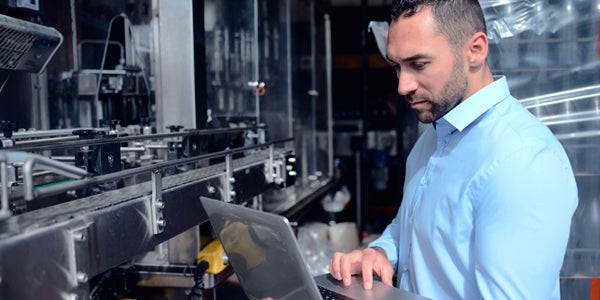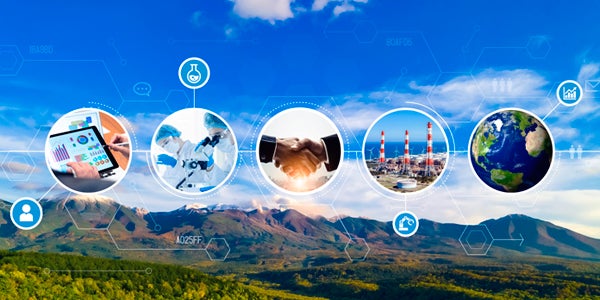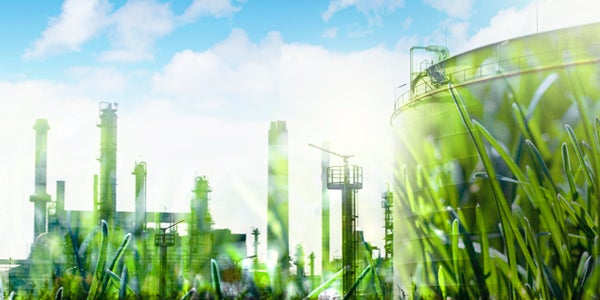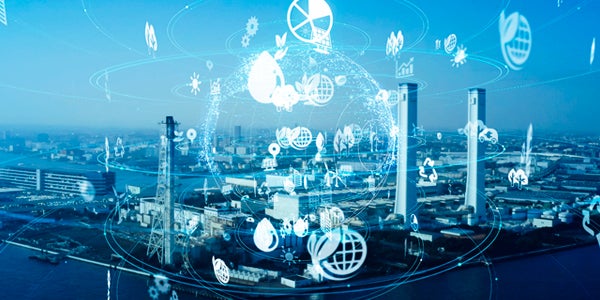Incorporating sustainability into your business model has never been more crucial than today. There is no time for lip-service when it comes to advocating for a sustainable future as a committed approach to sustainable practices result in a win for all sides. Read more here as we discuss sustainability and your bottom line.
While sustainability may have been thought of as a nice perk just a few years ago, modern business owners don’t have much say in the matter anymore. They must strive toward sustainable business practices to stay afloat. A value-driven approach to business is crucial to long-term success, but it’s more than just understanding the importance of sustainability. Businesses can’t get away with simply paying lip service to advocacy anymore. Instead, you must incorporate sustainability into your business model. Doing so contributes to helping the environment while boosting your bottom line—a win-win for everyone.
There’s no arguing against the trends. Almost all the largest companies now issue regular sustainability reports and set related goals. According to the Harvard Business Review, more than 2,000 worldwide companies have a science-based carbon target.
Experts predict even more increase in global sustainability reporting from N100 firms in the coming years. As of 2020, nearly 80% of the N100s issued such reports. By comparison, about 90% of the largest companies worldwide (as defined by Fortune 500 rankings in 2019) reported on sustainability in the same year.
Let’s explore the importance of sustainability and how adopting such practices in Industry 4.0 fields can help the environment while boosting your bottom line.
Sustainability: More Than Just an Industry Buzzword
It used to be all about location, location, location. Now, it’s sustainability, sustainability, sustainability. Consumers expect your business practices to pivot towards environmentally responsible alternatives.

But enacting “sustainable” strategies is more than just a marketing trend that capitalizes on a popular buzzword. The dictionary of business jargon is full of these buzzwords that are often overused to show that a company “cares” about the environment. But actions speak louder than words—and your customers will notice when you talk more than you act.
Long-term commitments to change and action are the only way to show you understand the importance of sustainability. That’s not to say this is easy. Long-term success, no matter your company goals, requires fully evaluating your business credentials. You must remain fair to your customers, partners, suppliers, and communities—while keeping the environment top of mind.
Finding the balance between planning and action is the key to success. The worst thing that can happen is your community accusing you of “greenwashing.”
Customers Can See Through Your Greenwashing
Greenwashing is when your environmentally conscious claims are little more than a marketing campaign. It’s when you use the word “sustainability” to promote your company without making genuine efforts.
Some companies greenwash without realizing it. Even though their intentions are genuine, their actions aren’t considered enough by their customers. Most Americans lose faith in a company that can’t credibly back up its sustainability claims. As a result, you could wind up losing more money to lost revenue due to negatively impacting your brand reputation than you would have if you’d just taken action.
Let’s look at the Alliance to End Plastic Waste (AEPW) as a case study. This non-profit based in Singapore pledged to spend $1.5 billion—money sourced from Shell, ExxonMobile, and Dow—to clean up plastic waste in developing areas. But AEPW failed to honor that promise, neglecting to clean up plastic in India’s Ganges River. To make matters worse, AEPW’s member organizations moved forward with plans to increase plastic production.
To avoid greenwashing, sustainability must become part of your organizational DNA. Among the most manageable first steps to take is auditing your packaging and waste practices to see how you can reduce the amount of waste generated.
With the technological advances of Industry 4.0, now’s the time to pivot your company towards practices geared to decrease your impact on the planet. Don’t leave your company’s environmental impact on the back burner.
How Do Industry 4.0 and Sustainability Go Hand-In-Hand?
Before we delve into the relationship between sustainability and Industry 4.0, let’s brush up on a few sustainability 101 concepts to better understand their relationships.

Sustainable manufacturing is the production of goods with an all-encompassing view of environmental impact. Such practices also keep employee and customer safety in mind, which should be standard across all industries. Sustainable manufacturing focuses on the product’s entire lifecycle, following it from sourcing to its eventual recycling.
You can look at sustainable manufacturing through several dimensions, but the three “pillars” are environment, society, and economy—also known as the Triple Bottom Line (TBL). At its core, TBL theory asserts that companies should focus on social and environmental concerns as much as profits.
Experts are leveraging Industry 4.0 tech to tackle TBL theory and sustainable manufacturing obstacles. Modern tech has made headway in addressing climate change, resource depletion, and environmental protection, shining a new light on the benefits of Industry 4.0. Initially, firms used AI, the Internet of Things (IoT), and other automated systems to digitize processes and increase production. Now, we’re seeing how these sustainable practices can also leave behind a positive environmental footprint.
You can think of sustainability as a net-positive byproduct of Industry 4.0 advancements. Just look at how quickly some companies rebounded in the wake of Covid-19, adopting digital solutions to move faster and further than their competitors. In doing so, they found ways to do more with less—reducing their waste and taking a positive step in the sustainable direction.
Data is another positive byproduct of automation. Digital solutions like AI, information technology (IT), IoT, and high-speed computing provide companies with near-infinite data. When used strategically, this data increases production and supply chain transparency, helping you optimize processes to benefit your TBL.
Why Are Businesses Aiming for Sustainability?
Sustainability is about more than riding the current trend. It’s about actively reducing your carbon footprint and showing clients and customers that you care about the planet’s future and understand the importance of sustainability. Some owners and operators fail to see the ROI in sustainable practices. They don’t want to spend the money to change—and, in doing so, can miss profit opportunities.

When assessing a company, modern investors lean on environmental, social, and governance (ESG) metrics. They want to invest in firms with positive ethical impacts through sustainable practices. They’ll look into your carbon footprint, water usage, board diversity, and community development efforts before putting money behind you.
McKinsey found that organizations with high ESG ratings have a lower cost of debt and equity. Additionally, sustainability efforts can foster public support while improving financial performance.
Yet another survey regarding attitude towards sustainability behavior from 2021 found that almost 89% of respondents expect their favorite brands to make more effort in reducing their carbon footprint. Meanwhile, 82% of respondents wanted companies to put people and the planet ahead of profits.
The intersection of environmental progress and financial gain is called the “shared value opportunity.” It’s proof that doing right by the planet can directly impact your ability to do right by your company. Companies worldwide saw the writing on the wall and pivoted their manufacturing lines towards more sustainable practices with the help of Industry 4.0 technology.
Sustainability and Your Bottom Line: How Helping the Environment Helps You
Worldwide, 44% of consumers said they’re more likely to buy from a brand with a clearly defined commitment to sustainable business practices. Thus, the data shows that pivoting towards sustainable operations can benefit the environment and your business. While you’ll ultimately reduce your company’s impact on the planet, you’ll also reap sustainability's short- and long-term financial benefits.

A 2020 Global McKinsey survey found that 83% of C-suite executives and investors believe ESG programs will increase shareholder value between 2020 and 2025. Meanwhile, an Accenture study on responsible leadership found that companies with high ESG ratings showed operating margins 3.7 times higher than those with lower ESG ratings. Their shareholders also profited, outpacing poor ESG performers by as much as 2.6 times.
The Challenges of Going Green
Despite overwhelmingly positive evidence, some companies are still hesitant to “switch” to sustainable business practices. Cost is usually the most significant roadblock standing in their way.
With sustainability at an all-time high, how can companies overcome the “cost hump” to keep up with their competitors? It begins with tackling a handful of other challenges associated with running a sustainable business.
Translating Interdepartmental Sustainability Goals
Companies are certainly feeling the societal pressure to reduce their environmental impact. Some pledge carbon-neutrality by 2040, while others go even further and promise to be carbon-negative by 2030. Don’t fall into the trap of out-greenwashing your competition. Instead, focus on how you can get your directors, brand managers, and product leads on the same page regarding your actual sustainability plan.
Examining the Customer’s Role
It isn’t difficult to use less water when cleaning. While that’s a tangible metric with positive environmental effects, it isn’t enough to call your company sustainable. Instead, you must look beyond your organizational practices to see how your customers interact with your products. For example, you can:
- Track usage and end-of-life patterns to see how and where you can make a product more durable.
- Convince your clients to join a recycling plan
- Pivot towards less wasteful products and services. Think about how many plastic water bottles Yeti and Hydroflask products indirectly save each year.
Better Packaging and Less Energy Consumption
Single-use packaging has become a pressure point in many regions. Instead, regulators are forcing companies to shift towards more sustainable, eco-friendly alternatives. These regulations don’t necessarily translate to higher costs.
Redesigns can be a growth opportunity, especially in the eCommerce age. Products bought online don’t need myriad anti-theft solutions and heavily branded packaging. Instead, you can cut costs and help the environment with limited and sustainable packaging. Meanwhile, reusable containers, lighter materials, and fewer production steps can boost your bottom line.
Boosting ROSI
Now we circle back to cost and your Return on Sustainability Investment (ROSI). Your ROSI evaluates gains resulting from sustainability initiatives related to your initial investment in those initiatives. Those gains can be more than purely monetary. They also include increases in investor demand, brand value, and employee engagement.
To truly boost your ROSI, you must consider all aspects of your business. Each department can benefit differently through sustainable practices driven by Industry 4.0. Consider how adopting these interdepartmental practices can cut costs, increase profits, drive brand awareness, and increase your ESG ratings with customers and investors.
What the Future Holds
We’ve come a long way in recent years. Far more companies have realized the importance of sustainability than ever before. Given the heightened interest, we can certainly expect a more sustainable world in the future. Many environmental issues today could be positively impacted if companies continue following—and expediting—these trends.

Industry 4.0 technology and manufacturing practices are making the journey significantly easier. Before, businesses had reached a sustainability limit. Now, companies can transform the market instead of teetering on the edge. All signs point to this “transformation” as the next phase of business sustainability.
Sustainable business practices ripple through the company. You should include board members and employees in discussions regarding the company’s plan and policies. It’s impossible to fix every issue at once; pinpointing a handful of sustainability goals for the future is the best way to start. Sustainability is a marathon, not a sprint.
Plan Your Sustainable Switch Today
Your customers don’t just hope you’ll adopt sustainable practices—they expect you to. The data doesn’t lie, and companies who refuse to pivot away from wasteful practices will ultimately fall into obscurity. You can’t just greenwash with marketing strategies and empty promises. Making sustainability investments today will have net positive effects in the future for you, your company, and the environment.
As with any business investment, a trusted financial partner can help you understand your ROI or, in this case, your ROSI. Thankfully, expert commercial bankers at Citywide Banks, a division of HTLF Bank are here to guide you on your sustainability journey.
Get in touch with Citywide Banks, a division of HTLF Bank today to speak to a banker with deep industry insight. Together, you can pivot your company towards the sustainable practices your valued customers demand.

